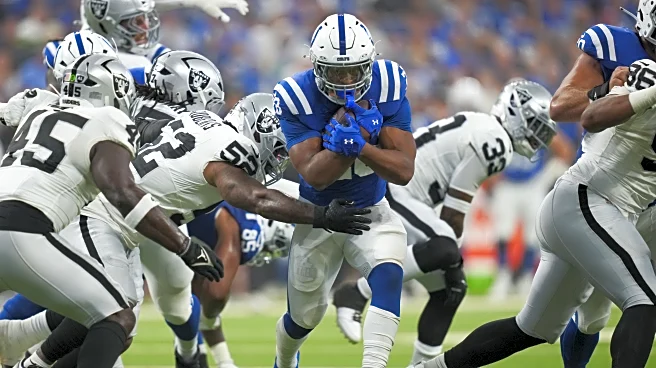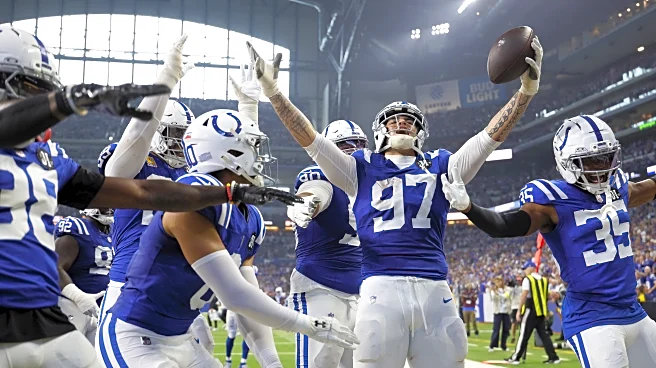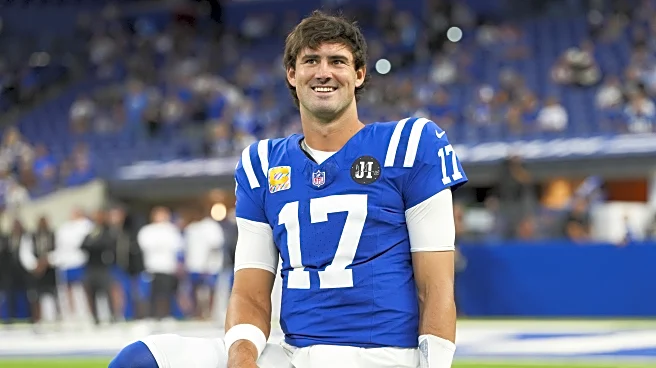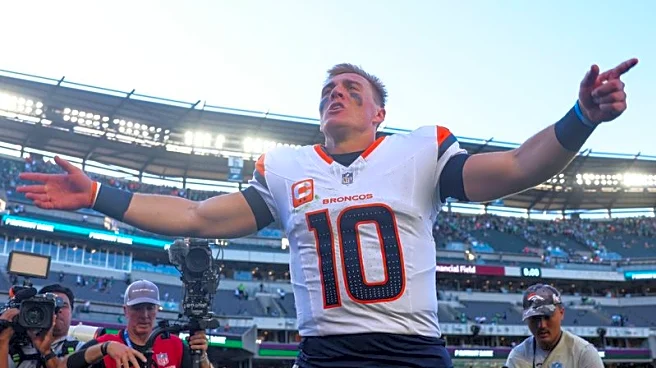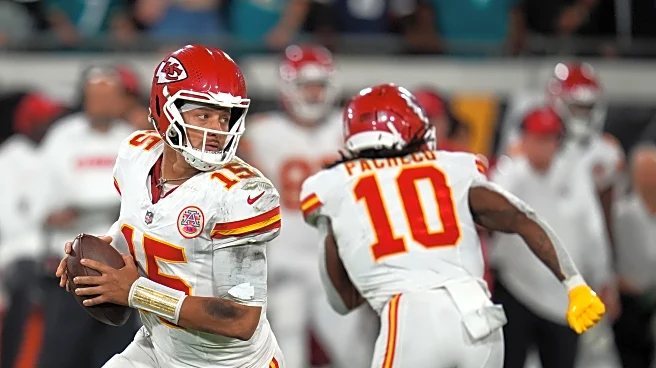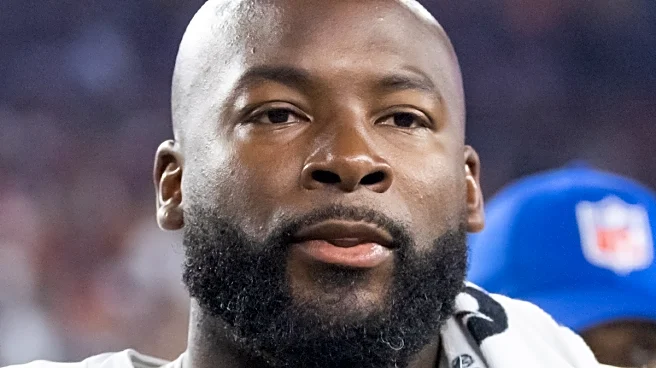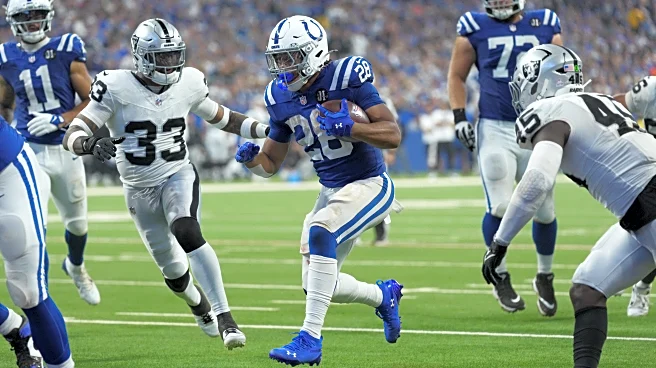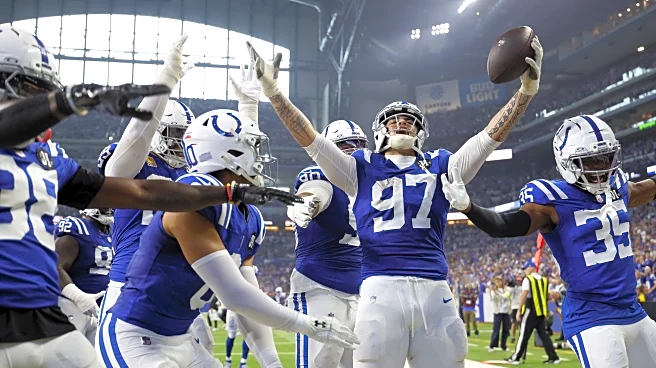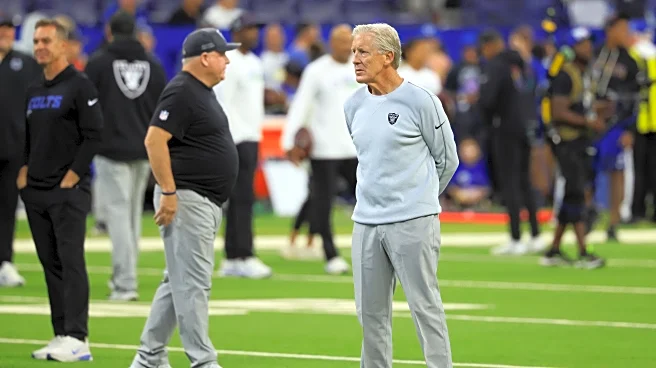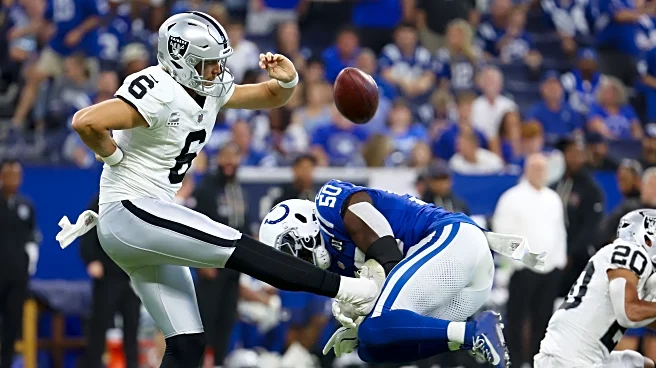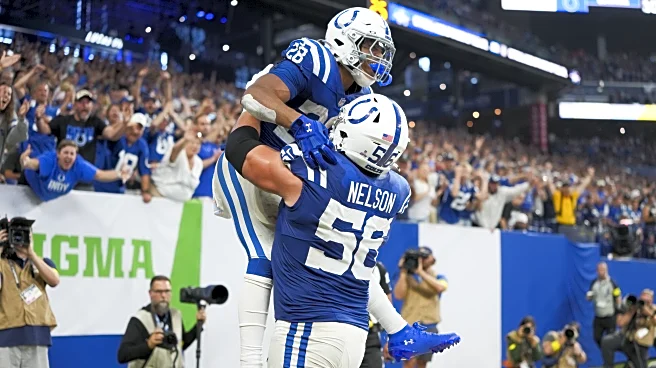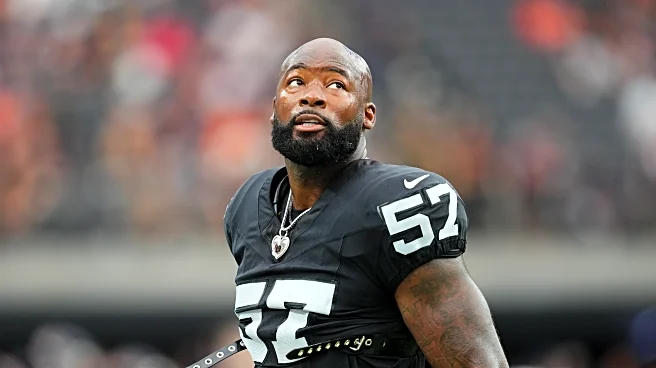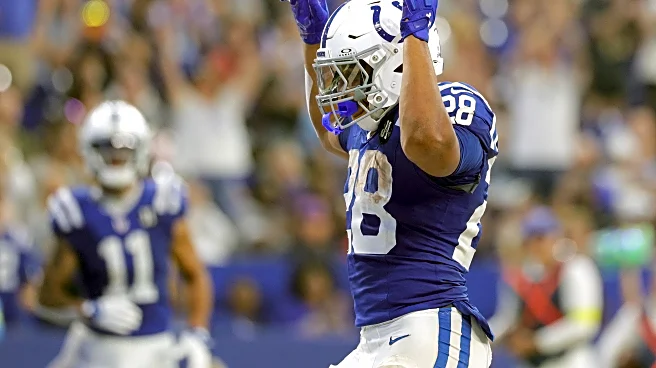Heading into the Week 5 matchup against the Indianapolis Colts, the Las Vegas Raiders were one of the top red zone defenses in the league. According to TeamRankings, the Raiders allowed touchdowns on about 38.5 percent of red zone possessions, which ranked fourth-best in the league. However, after letting the Colts go six-for-six
, Las Vegas has fallen into a tie for 13th as the figure jumps up to just under 58 percent.So, what happened in Indianapolis? How did the defense’s strength get turned into
a weakness? Let’s flip on the tape and find out.
This first clip is pretty simple. The Raiders are in man coverage, where safety Jeremy Chinn draws rookie tight end Tyler Warren on an out route. Chinn is protecting the middle of the field/inside initially, but he gets caught flat-footed and can’t drive on the out route. Notice how he takes several steps to break toward the sideline. That’s a result of not being in a good stance or athletic position with his knees bent.
Now, it’s unlikely that Chinn prevents the completion here, but he could have at least been in a position to stop the touchdown. In my opinion, this is the case of a guy just not being ready to play.
This next clip is frustrating because Las Vegas is in man coverage again, and linebacker Devin White does a good job of covering the wheel route from running back Jonathan Taylor initially. However, White never tries to make a play on the ball, despite being in a position to do so, and keeps his hands on Taylor throughout the entire route. As a result, good coverage turns into a pass interfernce call and the Colts get the ball on the two-yard line.
Three plays later, Indianapolis comes out in 13 personnel, where one of the three tight ends is actually an extra offensive lineman. However, Las Vegas doesn’t match personnel properly, leaving four defensive backs on the field, including rookie cornerback Darien Porter.
So, when Crosby gets caught trying to beat the extra offensive lineman with an outside swim move and then blocked into the second level, on top of White getting kicked inside by the combo blocks from the two true tight ends, Porter is left to take on the pulling guard, seven-time Pro Bowler Quenton Nelson. Obviously, that matchup favors the offense, and it doesn’t help that safety Isaiah Pola-Mao doesn’t scrape over the top of the tight end. Instead, Pola-Mao gets blocked and doesn’t make contact with Taylor until the goal line.
There’s no shortage of issues on this play, but it would help if the Raiders had an extra linebacker on the field instead of Porter. Granted, that could be a symptom of the Germaine Pratt situation, but Jamal Adams, Tommy Eichenberg and Cody Lindenberg were all active for the game. Any of those three would have been better options in this situation.
Here, the Colts run the same play (power) out of 13 personnel again, just with a slightly different formation. They have three true tight ends on the field and put one (Warren) at the wide receiver spot attached to the formation. Again, the Raiders stay in base personnel and Porter has to take on a block from Nelson, who has a full head of steam.
This time, Las Vegas blitzes Adams through the D-gap, but Indianapolis’ tight end picks up the blitz and pins Adams inside. The bigger issue is that Chinn takes the bait from Daniel Jones as Jones fakes the handoff to the weakside before giving Taylor the ball on the strongside of the formation. That makes Warren’s block easy as he seals Chinn inside, which, combined with a corner taking on a pulling guard, prevents the defense from having anyone to force Taylor inside or to cut up the field.
So, Elandon Roberts has to cover more ground laterally and misses the tackle, resulting in an eight-yard pickup and a first down.
Two plays later, defensive lineman Jonah Laulu gets penetration but is the only defender who wins. Meanwhile, defensive tackles Thomas Booker IV and Adam Butler both get blocked into the end zone. Also, Butler is slanting into the playside A-gap post-snap, which means Roberts is responsible for the backside A-gap. However, Roberts gets set up by Taylor and vacates his area.
So, all the running back has to do is avoid Laulu in the backfield and run straight through the open gap for a touchdown.
We’ll get two reps in one clip here as both expose coverage flaws from the Raiders, and they occurred on back-to-back plays.
In the first one, Las Vegas runs Cover 4, where Roberts drops toward the middle of the field to favor the passing strength and Chinn stays on the goal line to prevent the touchdown. The problem with the latter is that it’s third and six, so the defense has a chance to force a field goal. However, with the linebacker in the middle of the field and the safety playing deep, the short curl route is wide open for an easy first down.
On the very next play, the Raiders are in Cover 3. Porter tries to pass off wide receiver Michael Pittman, who runs a dig route, to Pola-Mao. But Pola-Mao has his eyes on Warren and vacates the middle of the field, as Warren runs a hook route over the ball. So, the safety is out of position and can’t make a play on the ball in the air, while the cornerback ends up covering no one, resulting in Pittman being open for a touchdown on the scramble.
For starters here, it looks like Las Vegas’ defensive line isn’t in the correct front because there isn’t a defensive tackle in either A-gap, and Roberts and Butler are both lined up in the backside B-gap pre-snap. On top of that, both interior defenders (Butler and Laulu) get blown off the ball against the inside zone call from Indianapolis. Additionally, White ends up getting blocked from the middle of the field to the hash mark.
The Raiders were lucky that Tyree Wilson beat Warren’s block to prevent the touchdown. Still, it’s a four-yard gain on first-and-goal from the six-yard line, setting up second and short.
Then again, the Raiders’ luck was short-lived since Ameer Abdullah scored on the next play. It’s another simple inside zone run; Laulu just gets pancaked by the combo block from the right guard and tackle, while Warren catches Crosby trying to time up the snap count. That creates a backside cutback lane right where the ball was snapped, so Chinn has to cover too much ground to make the touchdown-saving tackle.
We’ll wrap up with Indianapolis’ final touchdown toward the end of the third quarter. To be honest, Las Vegas’ biggest issue on this rep is that players were just checked out at this point in the game.
The Colts come out in an unbalanced look with both tight ends on the same side of the formation, before Warren motions to the other side and balances out the formation. However, no one on the second level of Las Vegas’ defense adjusts, so the unit has two defenders (Crosby and Adams) in the strongside D-gap, two in the strongside B-gap (Booker and Roberts) and White standing over the center. That leaves the weakside B-gap wide open.
Post-snap, Laulu doesn’t get across Nelson’s face while the center pulls, making the hole in the B-gap even wider. Also, I have a hard time believing that this is the best effort White and Roberts can give, as they both get blocked several yards down the field and Taylor goes untouched into the end zone.
Combine all of that, and it’s easy to see why the Raiders couldn’t get a stop in the red zone on Sunday.
